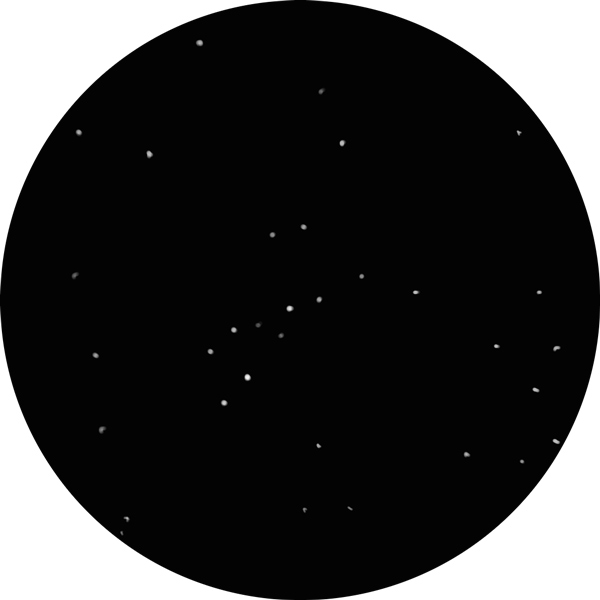Messier 48 (M48) is an open star cluster in the constellation of Hydra. It’s best viewed in early spring.
Though not easily visible to the naked eye from suburban skies, it’s possible to view without an instrument from a dark sky location. It’s too bad we cannot enjoy the entirety of this cluster because it is the size of two full moons. Approximately 80 stars make up M48. Due to its size, the cluster is best viewed with binoculars or a larger scope with a low-power eyepiece.
The discovery of Messier 48 has its own interesting tale. Charles Messier recorded the object in 1771, but the location he identified does not have a cluster. Observers now believe Messier simply made an error in his notes.
A decade later, two astronomers made their own recordings of Messier 48 independently. We know Johann Elert Bode recorded his observation on or before 1782, while Caroline Herschel cataloged her observation of M48 in 1783.
My Observations
| Date | May 6, 2021 |
| Time | 10:18 p.m. |
| Location | Seattle, WA |
| Magnification | 85x |
| Scope | Meade 8″ SCT |
| Eyepiece | 24mm |
| Seeing | Average |
| Transparency | Average |

I went with my lowest power eyepiece, realizing I need to buy a lower power. The cluster is filling my eyepiece. While no memorable or interesting pattern exists, I appreciate the greater size of M48. I want to return to this object on a moonless night to study the dimmer stars.
Also observed on February 24, 2022, at 8:10 p.m.: Tonight is a moonless night with crystal clear skies. I’m observing with a 24mm eyepiece. I believe I’m seeing more stars tonight. The center features a handful of brighter stars, with two sets of double stars running parallel.
Key Stats
| Constellation | Hydra |
| Best Viewing | Winter |
| Visual Magnitude | +5.8 |
| Absolute Magnitude | -3.6 |
| Distance from Earth | 2,500 ly |
| Diameter | 22 ly |
| Apparent Size | 30 arcmin |
| Milky Way Location | Orion Arm |
| My Viewing Grade | B |
Historical Observations
- Recorded by Charles Messier on February 19, 1771.
- Independently rediscovered by Johann Elert Bode before 1782.
- Independently rediscovered by Caroline Herschel in 1783.
February 19, 1771, observation by Messier.
“Cluster of very small [faint] stars, without nebulosity.”
March 8, 1783, observation by Caroline Herschel
“At an equal distance from 29 [Zeta] & 30 Monocerotis, making an equilateral triangle with those two stars is a nebulous spot. By the telescope it appears to be a cluster of scattered stars.“
Sources and Notes
Photo of M48 by Stephen Rahn from Macon, GA, USA. This file is made available under the Creative Commons CC0 1.0 Universal Public Domain Dedication.
This image was originally posted to Flickr by StephenGA. It was reviewed on 11 November 2020 by FlickreviewR 2 and was confirmed to be licensed under the terms of the cc-zero.
Charles Messier Observations: SEDS Messier Database
Sketch by Wayne McGraw
